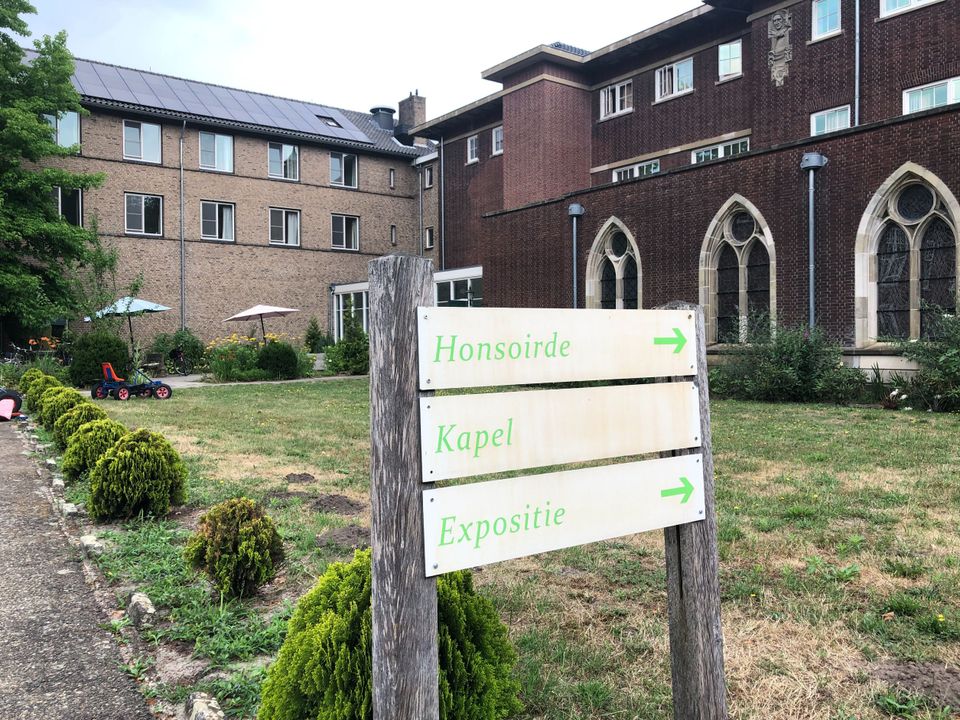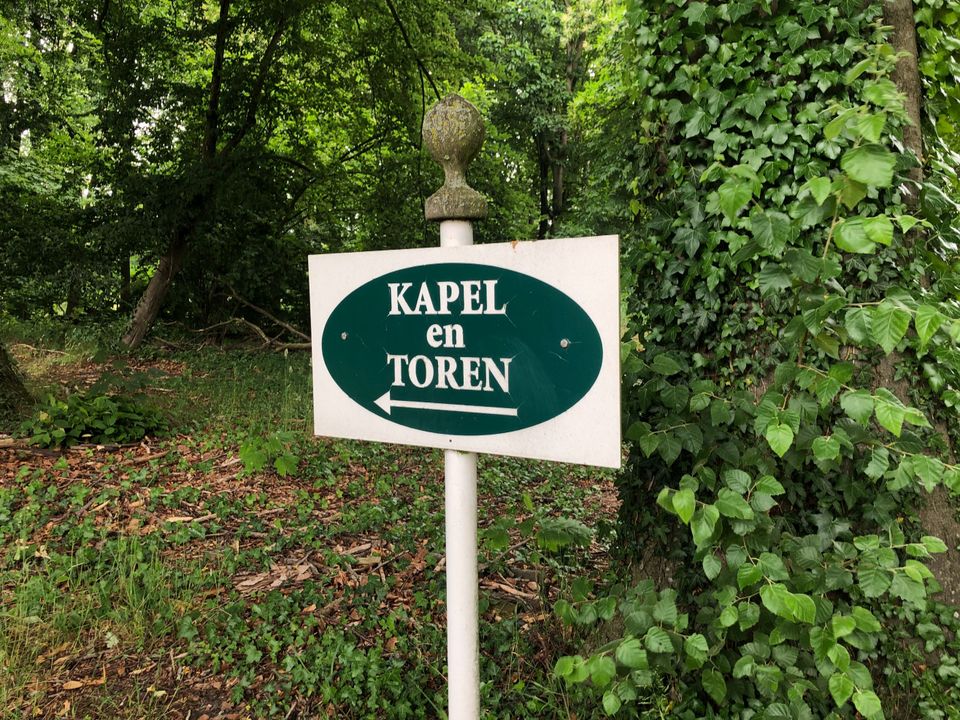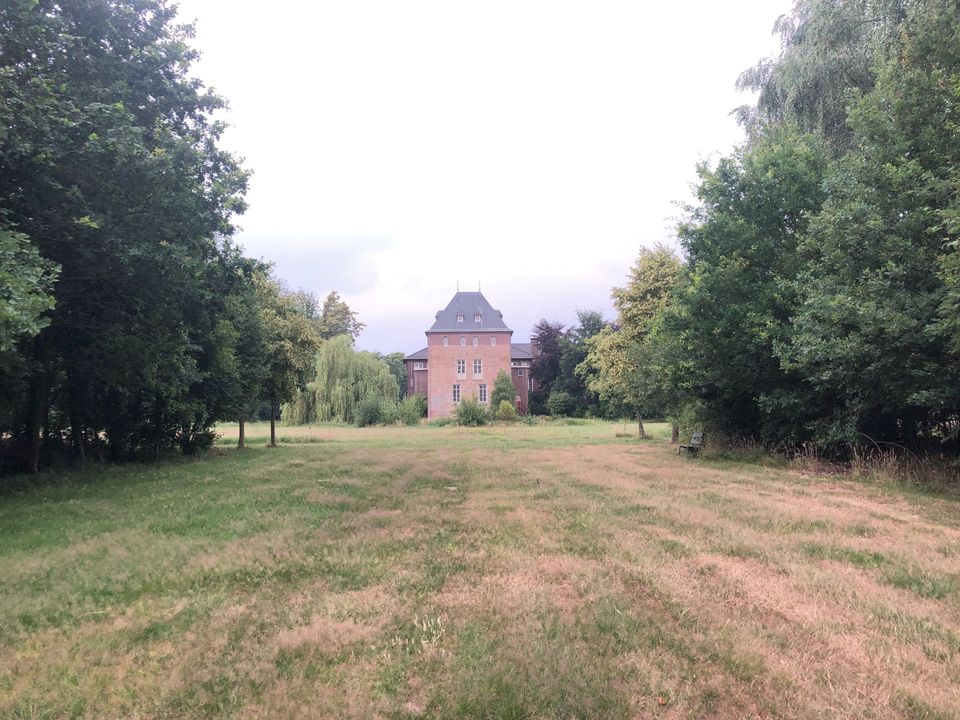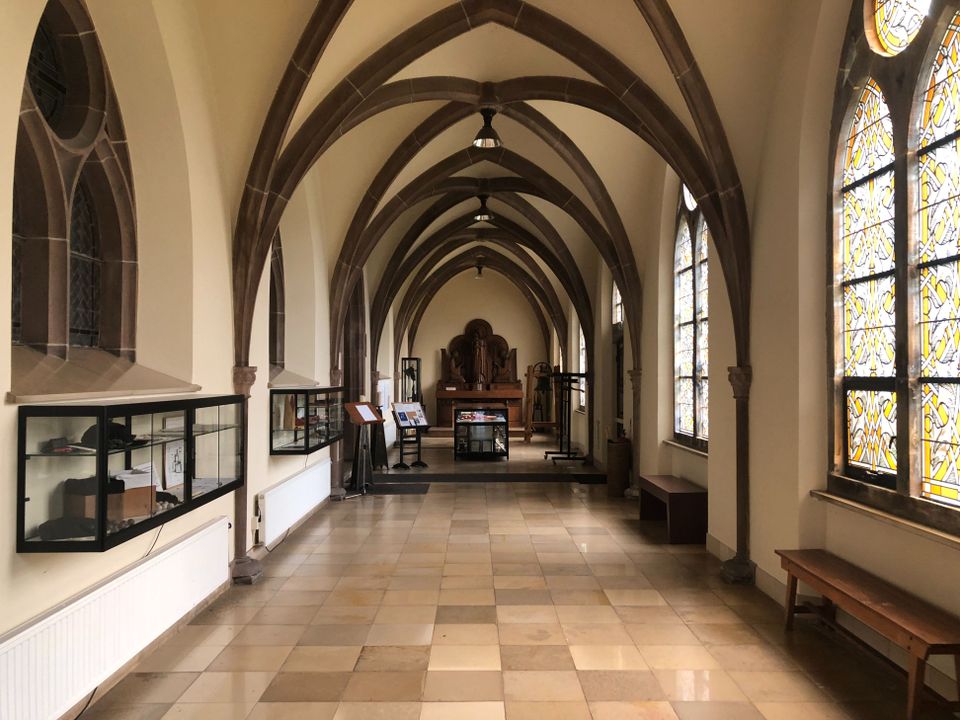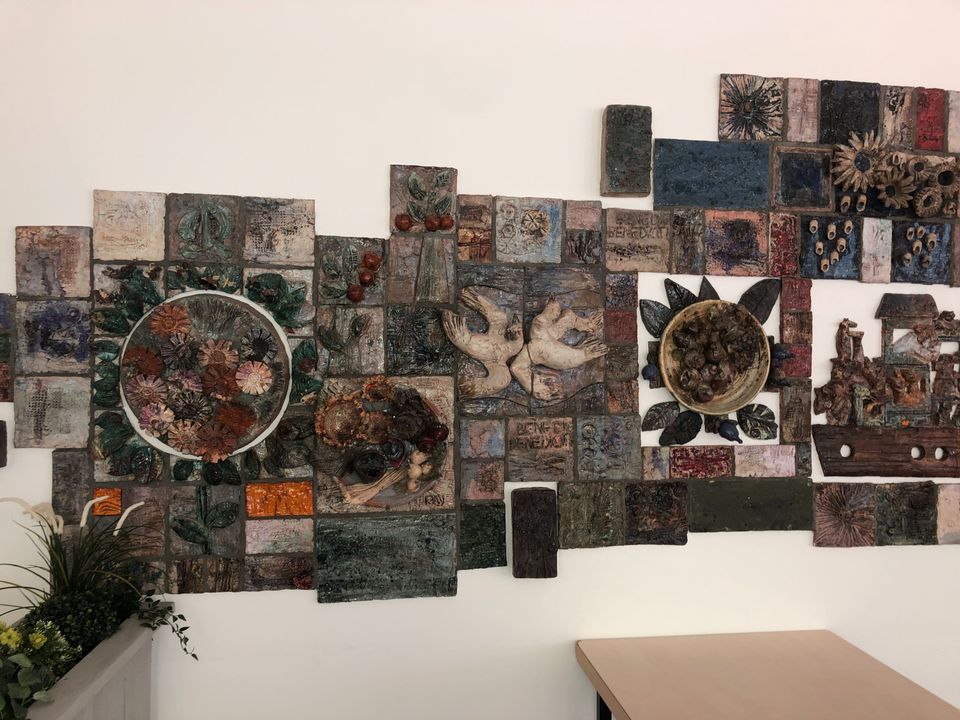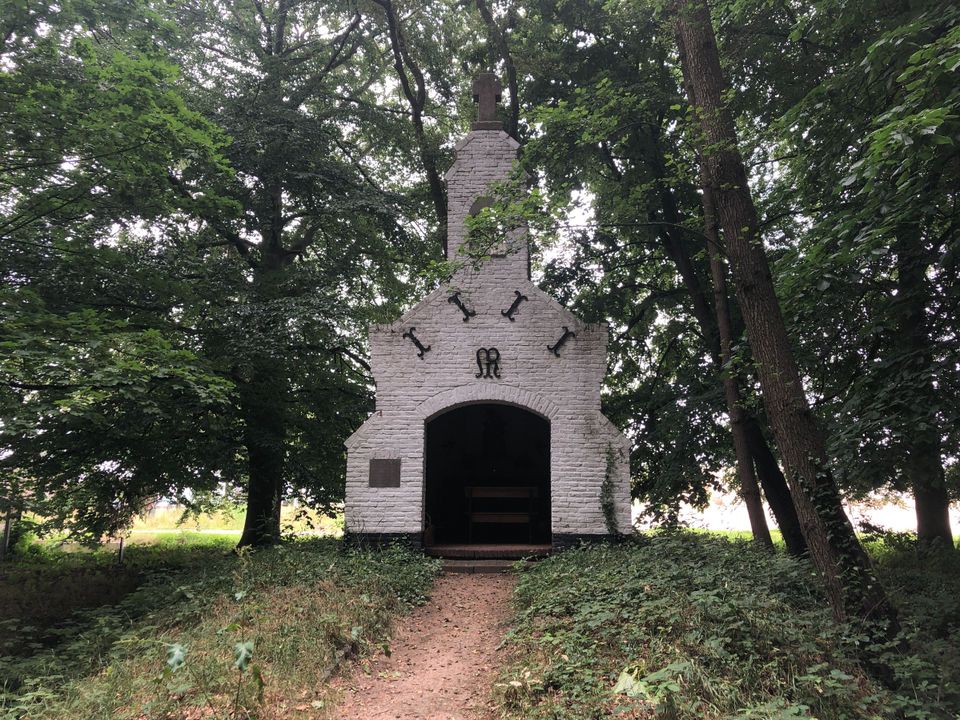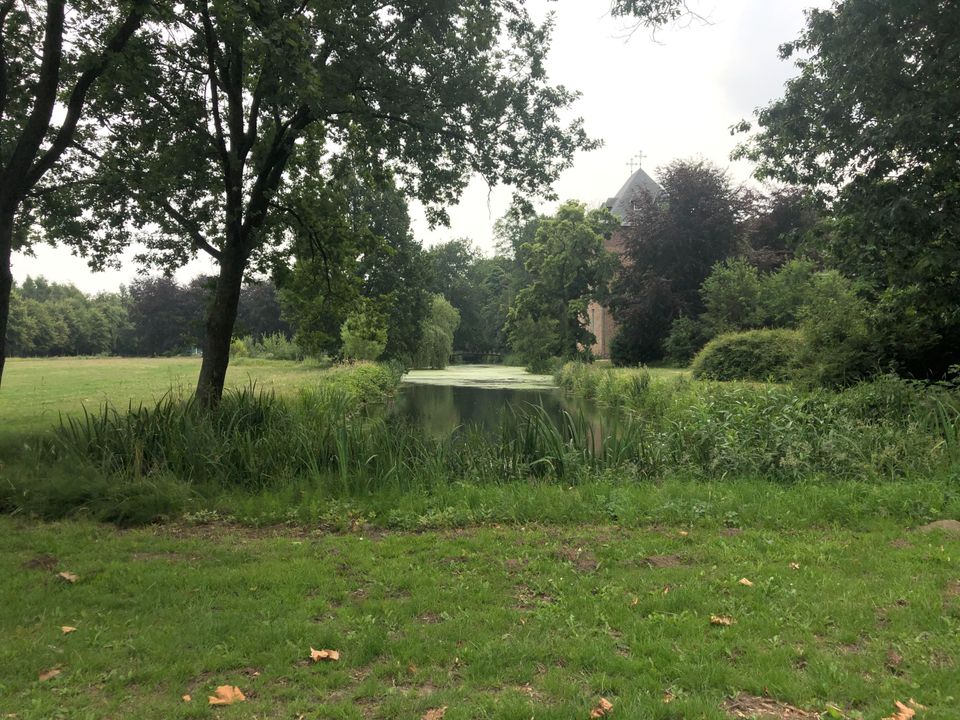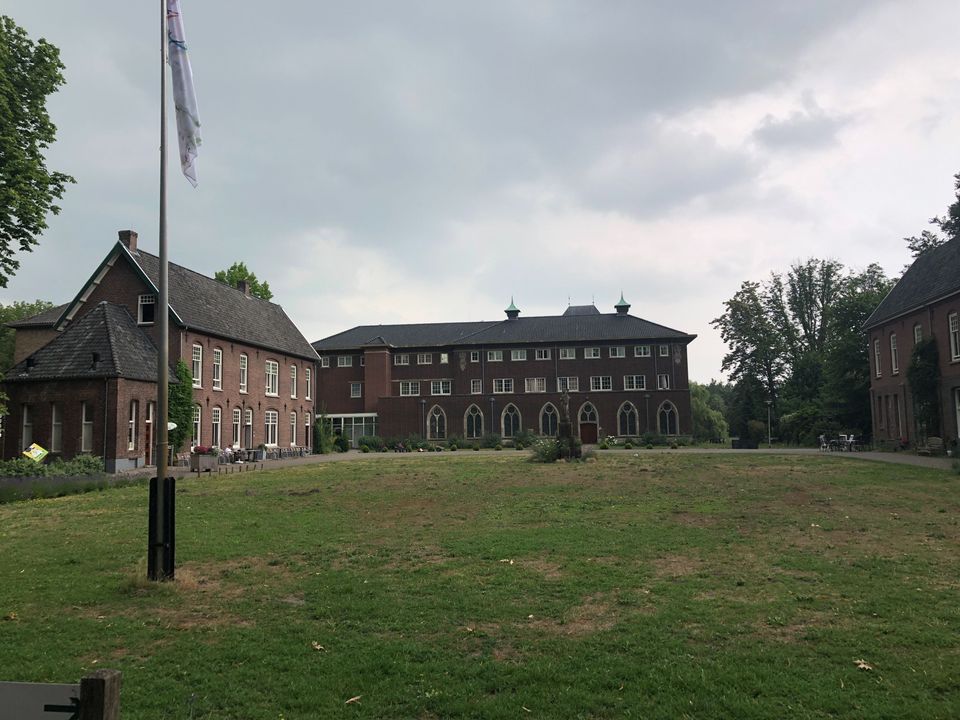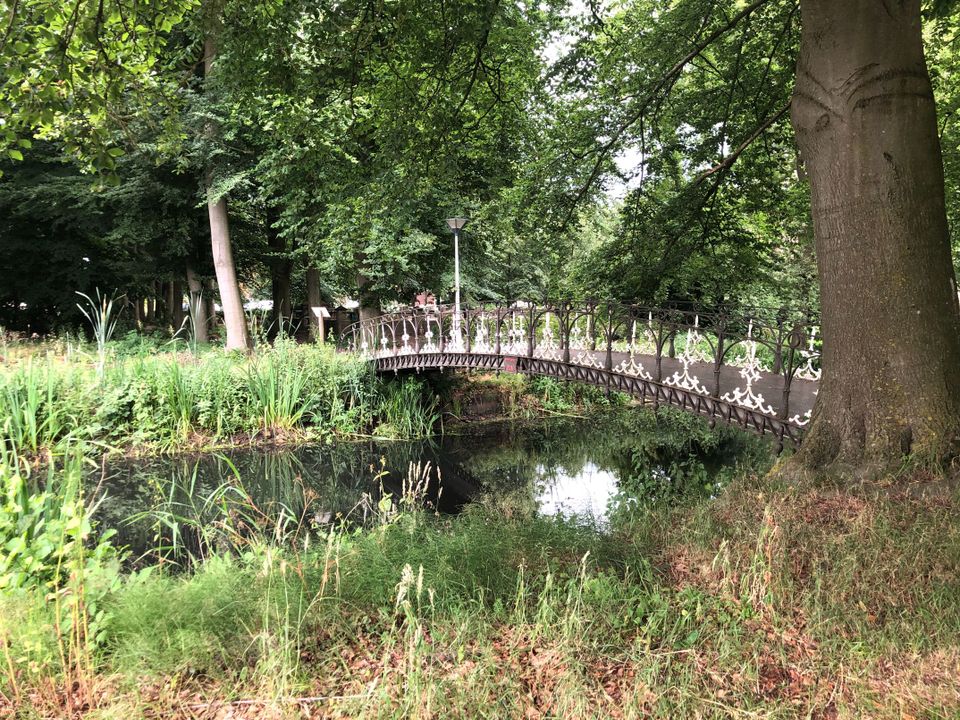Pearl of The Langstraat: Conferentiecentrum Abdijhof Mariënkroon
Are you familiar with Abbey Mariënkroon? Have you never heard of it? Sit back and relax. There's plenty to tell you about it!
Abdijhof Mariënkroon was an unknown place in De Langstraat for me for a long time. This changed after being allowed to write a blog earlier this year about the infamous White Feather Gang.
I think I'm just lucky to be allowed back to Abdijhof Mariënkroon. I get off the highway and turn onto the grounds a few minutes later. Walking to the reception area, I see Ellemiek already standing there. We shake hands and she welcomes me. ''Where shall we sit?" asks Ellemiek. The nice weather invites us to sit outside in the courtyard. And so we do.
I don't know where to begin. So much has happened on this piece of land. The first activity even dates back to the Iron Age. This is evident from the pottery shards found there. Wow! I didn't see any of this myself, but what I did see was the remaining tower of Castle Onsenoort. This castle tower, built as early as 1388, is located at the back of the abbey.
Continuing our conversation sitting down really doesn't work in a place like this. You just have to wander around here. ''Can't you give me a tour otherwise?'', I ask Ellemiek. ''We'll do that,'' is her reply.
Ellemiek, by whom I am taken today, is one of the two managers of Conferentiecentrum Abdijhof Mariënkroon. The former abbey is now a conference center with rooms and overnight accommodations. It owes its name and buildings to the fathers who, around the year 1934, built on the basement of the original Castle Onsenoort, the wings of the abbey that still stand today. It was first called the "Our Lady of Onsenoort," after which it was changed to monastery "Mariënkroon. Named after the Cistercian monastery that was plundered by the Geuzen in the Heusden area in 1579. 20 years later, in 1957, the monastery was elevated to an abbey.
I walk with Ellemiek through the chapel to the castle tower. On the way we pass the collection of the museum Mariënkroon. In the high corridor of the chapel hang old photographs and some showcases containing all kinds of relics.
Moments later we are standing at the entrance to the castle tower. I am amazed at the many keys on the bunch of keys Ellemiek conjures up. So it takes a while to find the right one. We step into the room. ''So this room can also be used for meetings, courses, workshops and so on,'' Ellemiek says as I wander intently through the room. ''So here we are above the basement of the castle tower,'' she adds.
As we walk back, I must ask her how many people she runs the conference center with. It seems like quite an occupation to keep track of it all. ''We have six permanent employees and the rest are basically all volunteers,'' Ellemiek tells me. It turns out that many of these volunteers live on the premises and are part of the Focolare movement. ''What exactly is that the Focolare movement?'' I ask. '''That's a Christian movement committed to connection and dialogue, and so on the grounds of Mariënkroon these people live together,'' Ellemiek says. The Focolare movement enables various functions of the abbey as a religious and socio-cultural center to continue. ''For us as a conference center, too, this means that we work on the basis of these principles,'' Ellemiek reveals.
We step into the hotel's large dining room. My eye immediately catches a work of art made of stone tiles. Ellemiek sees that I keep looking for a moment. ''It was made by Father Raymundus,'' she says, ''because he only had a small oven to make the tiles in, almost all are the same size.'' Ellemiek says several can be found across the property. Sounds like a fun scavenger hunt.
The hotel has a total of 45 rooms. A nice detail is that the rooms where the fathers stayed are also used. The long corridor with old doors gives it an authentic look. ''Our hotel is not a standard hotel,'' Ellemiek wants to tell me. ''All facilities are available in the rooms, but guests have to make their own beds,'' Ellemiek says.
From individuals and couples, to small and large groups. Everyone is welcome. Groups come here most often. ''Diverse it is,'' she says. ''So groups come here for conferences, workshops and meetings, but also for yoga and silence retreats.''
After a tour of the hotel, we walk outside. I see a volleyball court and some randomly placed go-karts. ''Everyone is allowed to use everything here. We want to give a sense of home to the guests,'' Ellemiek says. ''And for me, it feels that way, too. I'm allowed to look everywhere, all the doors open.
I see much more of the terrain than during the last time I was here. It continues to amaze. Ellemiek takes me into the woods. Where we are walking to I don't know. We pass a sign with "Marian Chapel" written on it. Then a cute little white church looms among the trees. How cute is that!
The grounds of Mariënkroon feel like an oasis of tranquility to me. I can recommend it to everyone to take a wander around here. Walk to the Maria chapel, for example, and then to the bridge over the castle moat. Then don't forget to enjoy the beautiful castle tower. You can and may go in any direction, because ''everyone is always welcome,'' indicates Ellemiek.
After your walk, you can even browse among the local produce at the reception, or sit down for a nice cup of coffee or ice cream.
Abdijhof Mariënkroon can certainly be called a pearl in De Langstraat!
It's nice to know that .
... church services and masses are still held in the chapel of Abbey Court Mariënkroon.
...Marienkroon is hosting Ukrainian refugees.
Click here for more info on Abdijhof Mariënkroon

